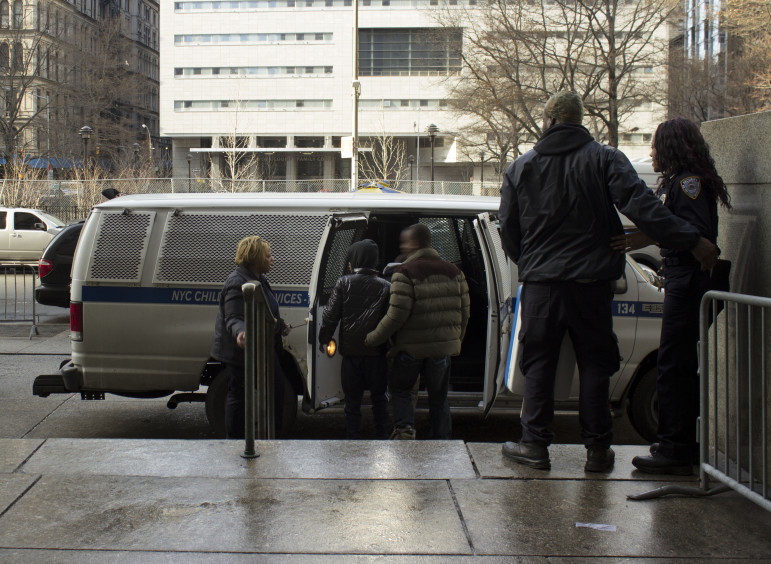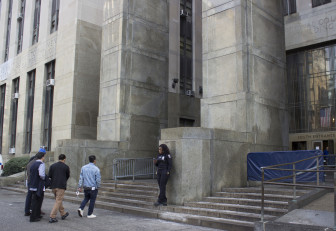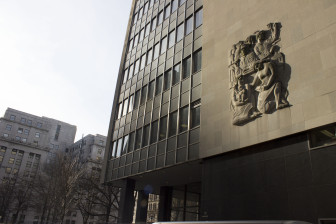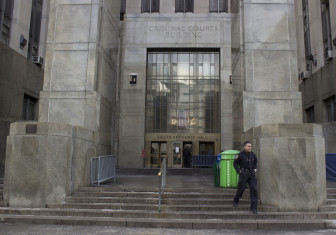
Lindsay Armstrong
NEW YORK -- On a wooden bench in the back of a small courtroom in downtown Manhattan, public defender Donna Henken is deep in conversation. She speaks in hushed tones to the district attorney on one of her cases, then turns to a middle-aged African-American woman sitting one row back.
“When he gets out of jail, will you let him back into the home,” Henken asks.
 “I’m concerned because they keep talking about supervision for him and I have to work,” the woman says.
“I’m concerned because they keep talking about supervision for him and I have to work,” the woman says.
The D.A. watches the exchange closely. Henken tries again.
“He will probably still do some time, but in two or three years, will he be able to live with you?”
This time the woman doesn’t hesitate.
“Yes,” she says. “I’m the only Grandma he knows.”
The conversation ends with a victory. The district attorney agrees to recommend Henken’s client for Youthful Offender status. As a Youthful Offender, he can still be punished for his crime. However, his records will be sealed so that crime won’t hurt his future educational or employment prospects.
Henken is pleased, if somewhat surprised, by this turn of events. The district attorney’s office is not always keen to compromise on her cases.
“My personality is to have a conversation and not a fight. Sometimes you can back the D.A. down with that, but I think the D.A. often comes in as the great punisher and I don’t really understand that,” Henken says later. “They should be able to see that these are young people who often come from very disadvantaged backgrounds.”
Henken works for the Legal Aid Society’s Adolescent Intervention and Diversion Project. Lawyers in this specialized unit handle cases in which 13- to 15-year-olds are charged with felony crimes. These adolescents are known as juvenile offenders and they are tried in adult criminal court rather than family court.
Henken’s clients struggle with the same issues as juveniles in the family court system. According to the Legal Aid Society, about 20 percent of these youth have experience with the foster care system. Almost two-thirds have special-education needs and about 25 percent of them have significant mental health issues that require ongoing care.
The lawyers in Henken’s unit work closely with a team of social workers to ensure that their clients get the same type of rehabilitative services they’d be eligible for in family court. With a range of 75 to 100 clients, Henken’s caseload is also much smaller than that of many public defenders. It allows her to really spend time forming relationships with her clients.
Juveniles In Adult Court
New York’s juvenile offender law was created in 1978 in response to public outrage over the case of 15-year-old Willie Boskett. Boskett, a self-described monster created by the prison system, shot and killed two men on the subway. Although he had a history of violent criminal behavior, Boskett was sentenced to a five-year placement in a juvenile facility, the maximum possible juvenile sentence at the time.
By July 1978, the state assembly had signed a new law that said that 14- and 15-year-olds could be held criminally responsible for certain crimes, including second-degree murder, arson and first-degree assault. In addition, judges were prohibited from using non-jail sentencing alternatives such as probation in these cases. The law also prevented juveniles from receiving Youthful Offender status.
In the 35 years since it was first enacted, the law has been stripped of some its more draconian aspects, experts said. The judges who preside over juvenile offender cases in the “Youth Parts” of New York’s criminal court now rely heavily on alternative-to-incarceration programs.
They also frequently grant Youthful Offender status to juveniles who successfully complete the court’s requirements. However, the stakes are still much higher for juveniles tried in criminal court than for those tried in family court.
This distinction is not lost on Judge Eduardo Padro, who presides over Manhattan’s Youth Part.
“In some ways, because I don’t have the same volume of cases as Family Court, I can spend more time with the youth. In other ways, I’m more limited,” Padro said. “Because it’s an adult court, the paradigm really is, what’s the crime and what’s the fitting punishment? Whereas in Family Court, it’s about what’s best for the child.”
Part of Henken's motivation for her work comes from a belief that adolescents should not receive criminal convictions, as some juvenile offenders do.
"A conviction is like a scar on their lives," she said. "You're talking about the poorest people in the city and then you're saying, we're going to make it harder for you to get a job, education, housing."
Yet, in some ways, she's happy to bring her cases before the Youth Part rather than Family Court, which is over-burdened with cases.
"When I was a lawyer in Family Court, people were really quick to remand kids and put them in detention," she said. "I feel that Judge Padro is much more thoughtful about his decisions to do that."
Melissa’s Story

Boskett’s case sparked major changes to the juvenile justice system, but the truth is that extreme violence in juvenile cases is rare. In New York City in 2010, only about 3 percent of juvenile cases involved weapons and fewer than 2 percent involved sexual offenses. Arson and homicide each made up about 1 percent of juvenile crime.
Henken says that the crime she deals with most often by far is robbery. Her next case is no exception.
It started two years ago when her client, a 15-year-old girl named Melissa, was charged with second-degree robbery. Melissa, whose name was changed for this story, and another girl punched a woman and stole her phone.
Because Melissa had never been in trouble before, Padro gave her a second chance. He placed her in a yearlong program with the Center for Community Alternatives. Melissa successfully completed the program and seemed to thrive at CCA.
Then things started to go downhill.
Melissa’s mother suffers from bipolar disorder and her home situation is unstable. In the past year, she has run away from home several times, violating the court’s conditions. Each time she runs away, Padro places her in a detention facility for a few days, most recently two days ago.
Her case has become less about her initial crime and more about the kind of violations normally handled in Family Court.
“She has a lot of people who really care about her and see her as a loving person with a lot of drive,” Henken says of her client. “But she’s not attending school regularly and she’s leaving home. I think that the judge feels like he’s not asking her for much.”

Lindsay Armstrong
Henken is concerned that Padro intends to keep Melissa in detention for much longer than a few days this time, so she has rallied the troops. Melissa’s case manager, her family counselor and her court advocate have all come to speak on her behalf.
The court officer brings Melissa to a small hallway just off of the courtroom. Henken tries to talk to her about what might happen during the hearing, but Melissa just sobs and repeats, “I want to go home; I want to go home.”
Eventually, a stoic Melissa makes her way into the courtroom, hands cuffed behind her.
Now it’s Henken who appears less than composed.
“Do you know that she was sent to Riker’s?” she asks the judge, unable to keep the edge from her voice.
Padro is surprised by this news. Adolescents are usually sent to juvenile facilities, not the 10,000-person prison known for its brutality and violence.
Henken requests a conference with the judge.
In a chamber just off of the courtroom, Padro, Henken and the advocates sit around a table and try to hash out Melissa’s fate, while she sits in the courtroom waiting for their decision.
The judge’s main concern is that Melissa will disappear again.
Melissa’s advocates have a plan. When her home situation becomes untenable, she will call one of her contacts at CCA to let them know where she is going. This way, she won’t violate the court’s conditions by going AWOL.
“Are you sure that home is the place for her to go?” the judge asks. “Because I came in here ready to keep her through the holidays at least.”
“She wants to be out and I think this is workable and we have a plan,” Henken says. “But if you do put her in, I think she should just do the time and that should be it and done.”
Eventually, they come to a compromise.

Lindsay Armstrong
Melissa will spend 30 days in a juvenile detention facility. When she is discharged, Padro will grant her Youthful Offender status and her case in the Youth Part will finally be closed after two stressful years.
Back in the courtroom, when Melissa hears the news, her whole body relaxes in one great sigh of relief. She is prepared to spend 30 days locked away if it means bringing an end to this. As she is led out in handcuffs, she looks at Henken and the advocates who have fought so hard on her behalf for two years.
“Thank you,” Melissa says. “Thank you guys so, so much.”
For Henken, the moment is bitter sweet. She thinks the end of Melissa’s case was long overdue, but it also represents a hard truth about her work.
“In some ways, the hardest part is reviewing people’s lives and realizing that you can help in a small part,” Henken says later. “But there’s also a lot of despair that you just can’t fix.”

